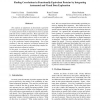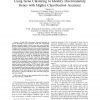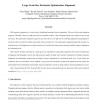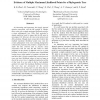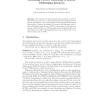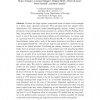BIBE
2006
IEEE
14 years 5 months ago
2006
IEEE
The analysis of alignments of functionally equivalent proteins can reveal regularities such as correlated positions or residue patterns which are important to ensure a specific f...
BIBE
2006
IEEE
14 years 5 months ago
2006
IEEE
BIBE
2006
IEEE
14 years 5 months ago
2006
IEEE
DNA sequence alignment is a critical step in identifying homology between organisms. The most widely used alignment program, ClustalW, is known to suffer from the local minima pro...
BIBE
2006
IEEE
14 years 5 months ago
2006
IEEE
An interesting and important, but largely ignored question associated with the ML method is whether there exists only a single maximum likelihood point for a given phylogenetic tr...
BIBE
2006
IEEE
14 years 5 months ago
2006
IEEE
This paper discusses an ontology based language modeling text mining approach to the annotation of protein community. Communities appear to play an important role in the functional...
BIBE
2006
IEEE
14 years 5 months ago
2006
IEEE
BIBE
2006
IEEE
14 years 5 months ago
2006
IEEE
Microarray experiments produce gene expression data at such a high speed and volume that it is imperative to use highly specialized computational tools for their analyses. One grou...
BIBE
2006
IEEE
14 years 5 months ago
2006
IEEE
We consider the planted motif search problem, a problem that arises from the need to find transcription factor-binding sites in genomic information. One of the fastest non-exact a...
ISBRA
2007
Springer
14 years 5 months ago
2007
Springer
Proteins are large organic compounds made of amino acids arranged in a linear chain (primary structure). Most proteins fold into unique threedimensional (3D) structures called inte...
ISBRA
2007
Springer
14 years 5 months ago
2007
Springer
Clustering algorithms are employed in many bioinformatics tasks, including categorization of protein sequences and analysis of gene-expression data. Although these algorithms are r...
